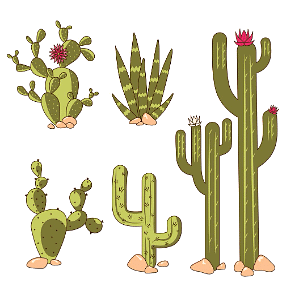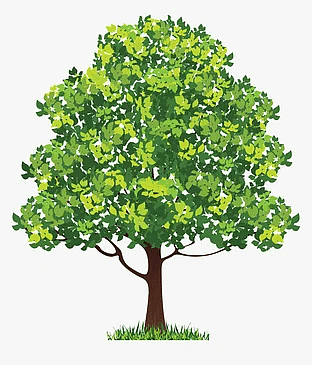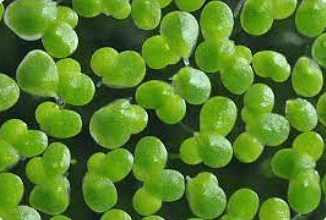Class 4 Science - Adaptations in Plants - CBSE Worksheets - 1
Q1: Give two examples of the following.
(i) Underwater plants _______________ _______________
(ii) Plants in mountains _______________ _______________
(iii) Floating plants _______________ _______________
(iv) Plants in deserts _______________ _______________
(v) Plants in heavy rainfall areas _______________ _______________
 Desert Plants
Desert Plants
Q2: Multiple Choice Questions (MCQs).
(i) Coconut trees grow well in _________ areas. Coconut Tree(a) swampy
Coconut Tree(a) swampy
(b) hilly
(c) desert
(d) coastal
(ii) These trees usually have waxy coating to prevent evaporation and loss of water.
(a) Hydrilla
(b) Mangrove
(c) Fir
(d) Coconut
(iii) Light and spongy water plants like __________ can float on the surface of the water.
(a) duckweed
(b) cactus
(c) mangroves
(d) lotus
 Plants floating on water(iv) _________ is an underwater plant.
Plants floating on water(iv) _________ is an underwater plant.
(a) Water lily
(b) Duckweed
(c) Eelgrass
(d) Lotus
(v) Plants in heavy rainfall areas are
(a) Sundew, pitcher plant
(b) Mango, pine
(c) Cotton, sugarcane
(d) Indian pipe, fir
Q3: Fill in the blanks.
(i) Underwater plants such as pondweed and eelgrass have narrow leaves without _______________.
(ii) Neem, peepal and sheesham are some trees that grow in _______________.
 Neem Tree(iii) Roots of some plants that grow out of the soil to breathe from air are called _______________ roots.
Neem Tree(iii) Roots of some plants that grow out of the soil to breathe from air are called _______________ roots.
(iv) _______________ plants like duckweed and Pistia have lots of empty spaces filled with air. Duckweed
Duckweed
(v) Long _______________ systems in desert plants go deep into the ground to absorb the available water.
Q4: True & False.
(i) Some terrestrial plants grow in water.
(ii) Evergreen plants do not shed their leaves at once.
(iii) The trees in heavy rainfall areas are called conifers.
(iv) The cactus plant stores water in its stem.
(v) Spines protect cactus from animals.
Q5: Match the following.

Q6: Answer the following questions in brief.
(i) What is a habitat?
(ii) Why do mountain plants have waxy coatings on leaves?
(iii) What are breathing roots?
(iv) How does long root system help desert plants?
(v) Define coniferous trees. Give two examples.
Q7: Answer the following questions in detail.
(i) How do plants in marshy areas survive? Explain.
(ii) Explain some adaptations in desert plants.
(iii) Draw a cactus plant and label its adaptations.
(iv) Choose the odd one out. State a reason for selection.
(a)
(b)
(c)
You can find Worksheets Solutions here: Worksheet Solutions: Adaptations in Plants - 1
|
48 videos|156 docs|34 tests
|
FAQs on Class 4 Science - Adaptations in Plants - CBSE Worksheets - 1
| 1. What are some examples of adaptations in plants? |  |
| 2. How do plants adapt to survive in different climates? |  |
| 3. How do plants adapt to low light conditions? |  |
| 4. What is the role of adaptation in plant evolution? |  |
| 5. How do plants adapt to living in aquatic environments? |  |






















